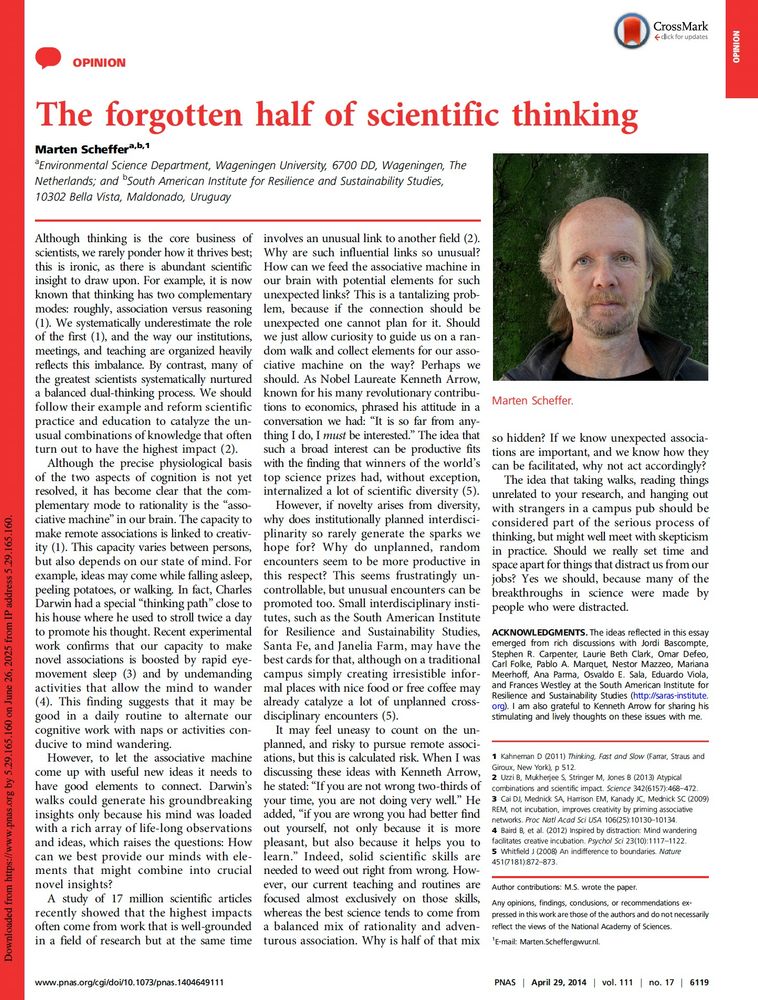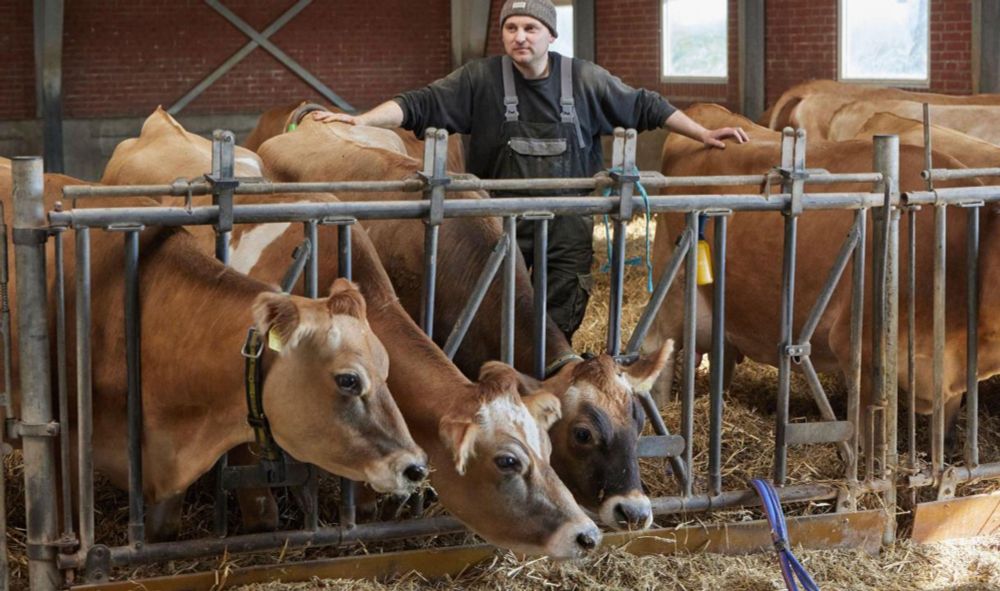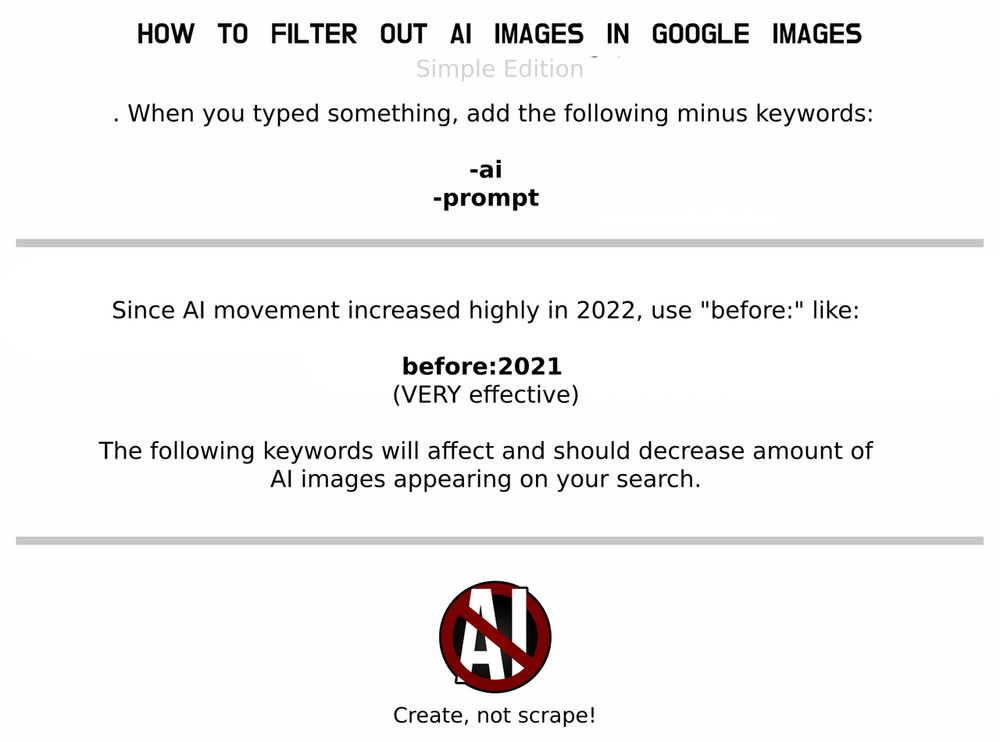
My art is on Instagram @rishi.jain.art

🦣 Animal #632 🐏
I figured it out in 3 guesses!
🟨🟨🟩
🔥 1 | Avg. Guesses: 3
metazooa.com
#metazooa

🦣 Animal #632 🐏
I figured it out in 3 guesses!
🟨🟨🟩
🔥 1 | Avg. Guesses: 3
metazooa.com
#metazooa
By @alecmac.bsky.social

By @alecmac.bsky.social
Sidenote: I don't love all the AI Ghibli going around these days. The timing here is a little unfortunate because I actually made this last year, so it looks like I'm stealing a trend. It really is just a testament to Miyazaki.

Sidenote: I don't love all the AI Ghibli going around these days. The timing here is a little unfortunate because I actually made this last year, so it looks like I'm stealing a trend. It really is just a testament to Miyazaki.
When preying on bluebottles, this creature consumes its stinging cells. From its stomach, specialized cnidophages transport these nematocysts the tips of its "fingers". These nematocysts can be expelled under threat, levying the stinging powers of its prey against potential predators.
Because this creature is not highly motile, it cannot seek out its prey. To overcome this challenge, it crawls onto its prey when found and attaches its embryos to the prey, ensuring localization for its offspring when they mature.
This creature targets Portuguese man-o-wars (blue bottles) as its primary prey. In fact, scientists have found it in the stomach of loggerhead sea turtles, leading them to conclude that individuals were incidentally caught by the turtles as they were feeding on blue bottles
When preying on bluebottles, this creature consumes its stinging cells. From its stomach, specialized cnidophages transport these nematocysts the tips of its "fingers". These nematocysts can be expelled under threat, levying the stinging powers of its prey against potential predators.
Because this creature is not highly motile, it cannot seek out its prey. To overcome this challenge, it crawls onto its prey when found and attaches its embryos to the prey, ensuring localization for its offspring when they mature.
This creature targets Portuguese man-o-wars (blue bottles) as its primary prey. In fact, scientists have found it in the stomach of loggerhead sea turtles, leading them to conclude that individuals were incidentally caught by the turtles as they were feeding on blue bottles
Because this creature is not highly motile, it cannot seek out its prey. To overcome this challenge, it crawls onto its prey when found and attaches its embryos to the prey, ensuring localization for its offspring when they mature.
This creature targets Portuguese man-o-wars (blue bottles) as its primary prey. In fact, scientists have found it in the stomach of loggerhead sea turtles, leading them to conclude that individuals were incidentally caught by the turtles as they were feeding on blue bottles
This creature targets Portuguese man-o-wars (blue bottles) as its primary prey. In fact, scientists have found it in the stomach of loggerhead sea turtles, leading them to conclude that individuals were incidentally caught by the turtles as they were feeding on blue bottles



This creature's blood has passive antimicrobial properties conferred by a set of innately-expressed short (<100 aa) peptides. Scientists have engineered these peptides to increase their antimicrobial properties, observing higher predicted killing of bacterial pathogens
This creature has a parietal eye: an organ on top of its head with photoreceptors containing an array of ancient non-visual opsins that are conserved across many groups of animals. This third eye is implicated in spatial awareness, circadian regulation, metabolic rate, etc.
In spite of the high dental stress this animal experiences as a function of its diet, it only has a thin layer of enamel. However, its teeth sequester iron at the cutting edge, resulting in greater strength and durability during use.
This creature's blood has passive antimicrobial properties conferred by a set of innately-expressed short (<100 aa) peptides. Scientists have engineered these peptides to increase their antimicrobial properties, observing higher predicted killing of bacterial pathogens
This creature has a parietal eye: an organ on top of its head with photoreceptors containing an array of ancient non-visual opsins that are conserved across many groups of animals. This third eye is implicated in spatial awareness, circadian regulation, metabolic rate, etc.
In spite of the high dental stress this animal experiences as a function of its diet, it only has a thin layer of enamel. However, its teeth sequester iron at the cutting edge, resulting in greater strength and durability during use.
This creature has a parietal eye: an organ on top of its head with photoreceptors containing an array of ancient non-visual opsins that are conserved across many groups of animals. This third eye is implicated in spatial awareness, circadian regulation, metabolic rate, etc.
In spite of the high dental stress this animal experiences as a function of its diet, it only has a thin layer of enamel. However, its teeth sequester iron at the cutting edge, resulting in greater strength and durability during use.
In spite of the high dental stress this animal experiences as a function of its diet, it only has a thin layer of enamel. However, its teeth sequester iron at the cutting edge, resulting in greater strength and durability during use.
Trump just shut it down.
No foreign adversary in their wildest wet dream could achieve such a devastating act of traitorous sabotage with a stroke of a pen.
Shutting down the NIH indefinitely without stated cause is literally an act of sabotage.
Left: yesterday. Right: today.


Trump just shut it down.
No foreign adversary in their wildest wet dream could achieve such a devastating act of traitorous sabotage with a stroke of a pen.
and the choice of that strategy tells you they are afraid you *will* do something about it
and the choice of that strategy tells you they are afraid you *will* do something about it
-For every dollar we invest in NIH research, there is a $2.5 return.
-Research dollars help fund universities that employ non-academics. (1/)
-For every dollar we invest in NIH research, there is a $2.5 return.
-Research dollars help fund universities that employ non-academics. (1/)
- if you have a spare buck, give it to Wikipedia, then repost this
- if you don't have a spare buck, just repost
your action is mandatory for the world's best source of information to survive

- if you have a spare buck, give it to Wikipedia, then repost this
- if you don't have a spare buck, just repost
your action is mandatory for the world's best source of information to survive



Sharing this with my students so I figured I'd also share it with everyone here.
Hopefully this image is still relevant given Google's changes. Save this on your computer or phone and refer to it as needed.

Sharing this with my students so I figured I'd also share it with everyone here.
Hopefully this image is still relevant given Google's changes. Save this on your computer or phone and refer to it as needed.

